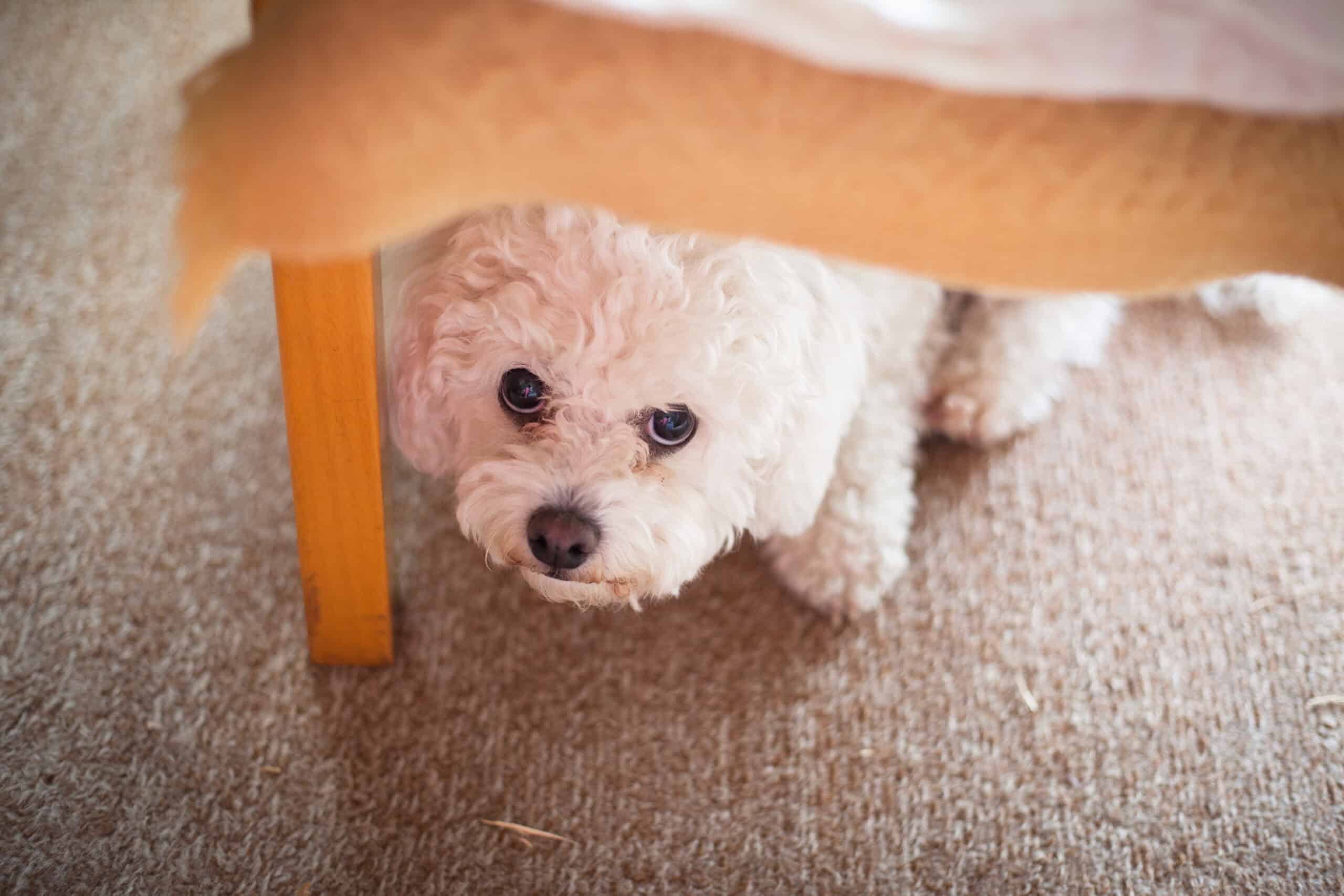If you have just acquired a puppy, you may be brimming with enthusiasm at the life that lies ahead for you and your new family member. Perhaps you have a specific purpose in mind for your puppy (such as training them to become a fully-trained service dog or working K9), or maybe you’re simply envisaging them as a valued pet in your family l for the next 10-15 years; regardless of the circumstances, getting a new puppy can be a very exciting time to be a dog owner.
However, despite your initial enthusiasm, there may be a few bumps in the road along the way. If this isn’t your first time owning a puppy, then you may be familiar with the ‘fear phases’ that your puppy will experience in the first couple of years of their life. Understanding how to navigate these phases is essential to helping your puppy grow into a well-rounded, confident adult dog.
Whether you’re an experienced dog owner or this is your first time with a puppy, in this article, we’re going to explore the two major fear phases that your puppy will experience – and how you, as their guardian, should approach them.
First fear phase
The first fear phase typically occurs between 8 and 11 weeks of age.
At this stage of your puppy’s life, they may be undergoing some significant changes. For example, this is usually the point where they are being brought home and separated from their mother and littermates. In addition, your puppy will continue to become more aware of their surroundings and influenced by everything they interact with – whether it is people, other animals, or the general environment around them. This phase coincides with the vital socialization window, so it is essential to keep experiences positive during this period of your puppy’s life.
Second fear phase
The second fear phase typically occurs between 6 and 14 months of age.
This fear phase covers a much broader period of time. Due to the differences in the way dogs develop, smaller dogs often hit this second fear phase before larger breeds. During this period, you might see your dog begin to exhibit fearful tendencies when presented with new situations. They may become hesitant around other dogs, or reluctant to interact with new people.
How do I know if my puppy is fearful?
It is always important to be mindful of your dog’s behavior, but it is never more critical than when your puppy is experiencing one of their fear phases. Look out for these key indicators that your puppy may be fearful:
- Cowering or withdrawing from a situation
- Hesitancy when presented with novel environments
- Reluctance to engage with situations that the puppy appeared confident in previously
- Easily startled, and slow to recover from unexpected or loud noises
- Changes in appetite, including a lack of desire to eat at regular mealtimes
- Body language cues, such as tail tucking, lip-licking, panting, yawning or pacing
Of course, some of these behaviors may occur for other reasons, and not just because of a developmental phase. For example, a change in appetite could be a consequence of a gastrointestinal issue. Lip-licking or panting may be signs of stress as opposed to fear. If you’re unsure about if your puppy is going through a fear phase – or you want to have an expert on hand for when your puppy reaches that stage – consider speaking with a professional dog trainer or behavioral expert.
How to navigate fear phases
Now that you know when the fear phases occur – and what changes in behavior related to fear actually look like – you may be wondering how you should deal with them. We’ve outlined some troubleshooting tips below.
Be selective about their experiences
There are some schools of thought that simply exposing your dog to anything and everything from a young age will help them to overcome fear phases. The reality is that this usually creates more problems than it solves, because any benefit of exposure is outweighed by negative experiences that can have a lasting impact on your dog. If you’re hesitant about taking your dog to a busy downtown area, or worried about letting them meet other dogs, don’t feel that you have to force this upon them. You are in control of their experiences.
Plan your activities
To build on the first tip, always be deliberate about where you take your puppy during these fear phases. For example, don’t stumble upon a dog park and throw your puppy in there because it seems like the right thing to do (in general, dog parks can be a poor environment, as puppies and older dogs alike can pick up bad habits). Instead, try to think of calm, enriching activities that you can do together that will result in a positive outcome.
Encourage your puppy
Positive reinforcement is often a successful approach, but it can be especially rewarding during your puppy’s fear phases. Not only will this reduce your dog’s propensity for fear, but it will further build a strong bond and level of trust between the two of you.
Don’t rush your puppy
Even with the best of intentions and diligent planning, your puppy may still encounter a situation that causes them to startle. The important thing as a puppy owner is to give your pup the opportunity to settle, relax and recover from a fearful interaction. Rushing them back into the line of fire without giving them that opportunity to regain their composure will only heighten the fearful response.
Remain calm and patient
Dog training is a marathon, not a sprint – and that’s particularly true when it comes to working with puppies. If you run into setbacks, remember that you have a long journey ahead with your puppy. Keep calm, allow yourself and your puppy to regroup, and then proceed onwards. Dogs are incredibly sensitive and attuned to our emotional responses, and if we are fearful, it can increase the likelihood that they will exhibit fear, too.
In conclusion
If – or more likely, when – your puppy encounters their fear phases, you have to prepare yourself to deal with them. The success of your approach can have a positive impact on your puppy for years to come.
If you need help navigating your puppy’s fear phases, or if you’ve just acquired a puppy and are looking for help in the weeks and months ahead, our team at Greenside Canine is here to help! We offer specialized puppy training programs to help your pup get off to the best start in life. Call us at (317) 558-9145 or email train@greensidecanine.com for more information.

